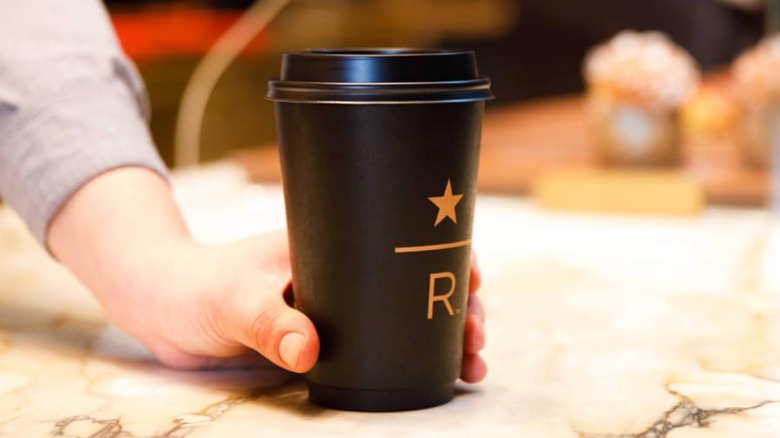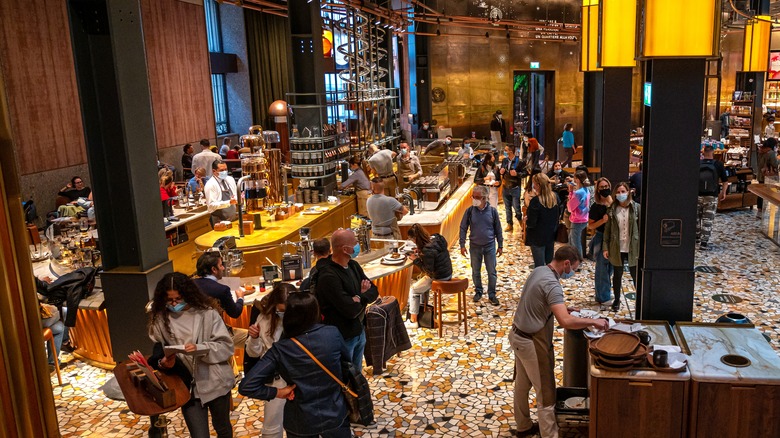The Luxurious Heated Bar You'll Only Find At Italian Starbucks
The Starbucks nearby the La Scala opera house in Milan isn't the kind of coffee shop you'd find in the streets of New York. This location delivers a different kind of experience. Drawing from Italian culture, the Starbucks Reserve Roastery serves up pizza and ice creams alongside espressos and cocktails. The coffee may be pricier than at other Starbucks shops, but the environment is made with luxury in mind.
A heated surface made with Calacatta Macchia Vecchia marble serves as the backdrop for drinks. This marble is known for its light hue and contrasting streaks of gray throughout the material, and you won't find another piece of stone like this anywhere else in the world. One artisan explained that the likelihood of finding another block with the same color and intricate details is next to impossible. Not only is the marble, which was cut from a single 30-foot block piece, a sight to behold, but it can also keep drinks warm on a cold winter's day. Due to the radiant heat inside, the surface stays warm to the touch.
Irreplicable material in an unforgettable setting
A CNC machine was used in the process to craft the marble bar. These machines are used in manufacturing and industrial settings and rely on both computerized and machine tools to shape pieces made of metal, wood, or glass into custom designs and styles. "This is a fully-fledged work of art," one of the artisans told Starbucks. "It is possibly the most demanding work I have done since the beginning of my career."
Designer Liz Muller, who also worked on concepts of Starbucks roasteries in Seattle and Shanghai, is no stranger to the importance of a well-crafted space when it comes to encouraging lingering conversations and more drink orders. During an interview with Starbucks Newsroom, via Elements Room, Muller said she looked to Milan city streets to find inspiration and watched Italians live, shop, and go about their daily lives while thinking about the concept for the store's design. The sculptures, colors, and stone Muller found throughout the city became woven into the roastery's layout.
Muller's vision and the artisans' hard work paid off, resulting in a setting that is appreciated by locals and visitors alike.

